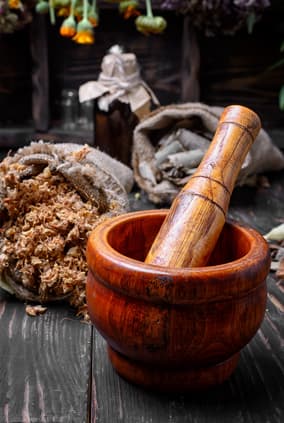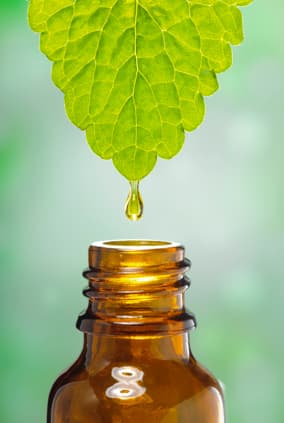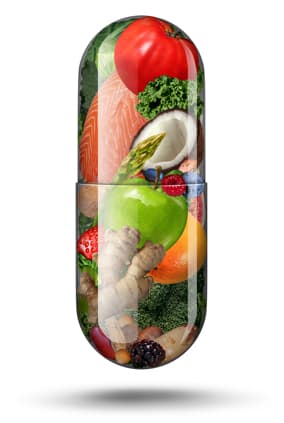
FORMS OF HERBS / BOTANICALS
Herbal Medicine can be used in a variety of ways such as teas or tisane, in baths, pills, tinctures, infusions, extracts, poultices, ointments, oils, compresses, salves and creams depending on the course of treatment that our Toronto naturopath thinks would best suit the clients’ needs.
- Herbal Teas
- Herbal Tinctures
- Fluid Extracts
- Juices
- Herbal Poultices
- Powdered Herbs and Capsules
- Herbal Ointments
- Essential Oils
There are two methods of making herbal teas, infusion and decoction. Naturopaths may prescribe healing teas for various health issues depending on the clients’ symptoms. Both methods of making teas are extremely effective:
Infusions:Infusions are hot water extracts made from herbs with medicinal constituents in their flowers, leaves and stems such as chamomile, mint, green and black tea among others. Most people drink these on a regular basis.
DecoctionDecoction is boiling tougher parts, such as roots or bark for a longer period of time such as ginger or cinnamon tea. The longer boiling time allows for the extraction of constituents and essential oils with beneficial health benefits.
Tinctures are extracts that are made with alcohol instead of water. Alcohol extracts of various medicinal herbs and plants usually remain potent longer and are stronger than teas. Herbalists / naturopaths may mix several herbal tinctures for individualized herbal prescriptions for clients.
Fluid extracts are stronger than herbal tinctures and can be made with alcohol or glycerin. Various types of extracts are available such as solid extracts of licorice and hawthorn. Cold extracts are made with cold water to effectively preserve the most volatile ingredients, and extract only minor amounts of mineral salts and bitter constituents, making them more palatable as well.
Fresh juices of plants/ herbs are simply prepared by juicing them. This is an excellent way of getting vitamins and minerals from the plant; but the juice must be taken within a short time after being pressing since the vitamin content declines rapidly as oxidation occurs with exposure to air and fermentation sets in as well.
Poultices are used externally to treat affected skin areas. They are generally prepared fresh for each use by crushing the medicinal parts of the plants to a pulp -like mass. If dried herbs are used, they are generally mixed in with a substance such as water, vegetable fat before they it is applied to the skin. They have the shortest life span of any herbal remedy. A fomentation / compress has the same application, however generally a decoction or infusion is used with a compress.
Dried powdered herbs can be packed into tablets and gelatin capsules. Capsules are a convenient way to carry herbs and also to take herbs that are unpleasant. Syrups are another way to take herbs, especially for administering medicines to children.
An ointment or salve is a semi-solid preparation made to be applied to the skin. Depending on the purpose for which it is designed and its method of preparation, the texture can vary from very greasy to a thick paste. The simplest ointments use petroleum jelly /beeswax, olive oil or vegetable oil as a base.
Most people are familiar with essential oils used for relaxation such as lavender, or eucalyptus for colds or tea tree essential oil for acne. Essential oils are extractions of volatile liquid plant materials and other aromatic compounds from plants. These plant oils may be used internally in some forms of herbal medicine as well as in aromatherapy.
In naturopathic treatments, essential oils have proven to be highly efficacious in the treatment of headaches and muscle soreness, joint pain and certain skin diseases. Herbal baths are another way of using herbs and plants to cover a larger part of the body – for example – using oatmeal / Aveeno for babies in their baths or using lavender or camomile flowers for a relaxing bath.
Related Articles
Candidiasis
Candida overgrowth in the gastrointestinal tract is now becoming recognized as a complex medical syndrome known as chronic candidiasis or the yeast syndrome. Symptoms include: Multiple food allergies, or allergic to all foods( pan allergic), alternating diarrhea with constipation.
Chronic Fatigue
Chronic Fatigue Syndrome (CFS) is described as a severe, debilitating fatigue, lasting at least six months (of new and definite onset), associated with at least four of the following symptoms: impaired memory or concentration, sore throat, muscle pains, joint pains, unrefreshing sleep and post-exertion malaise.
Irritable Bowel Syndrome
Irritable bowel syndrome (IBS) - a diagnosis of exclusion, this condition is often misdiagnosed. Severe food intolerances / allergies may exhibit symptoms that are similar to Irritable Bowel Syndrome such as pain, cramping, gassiness, sudden bouts of diarrhoea, and constipation.




